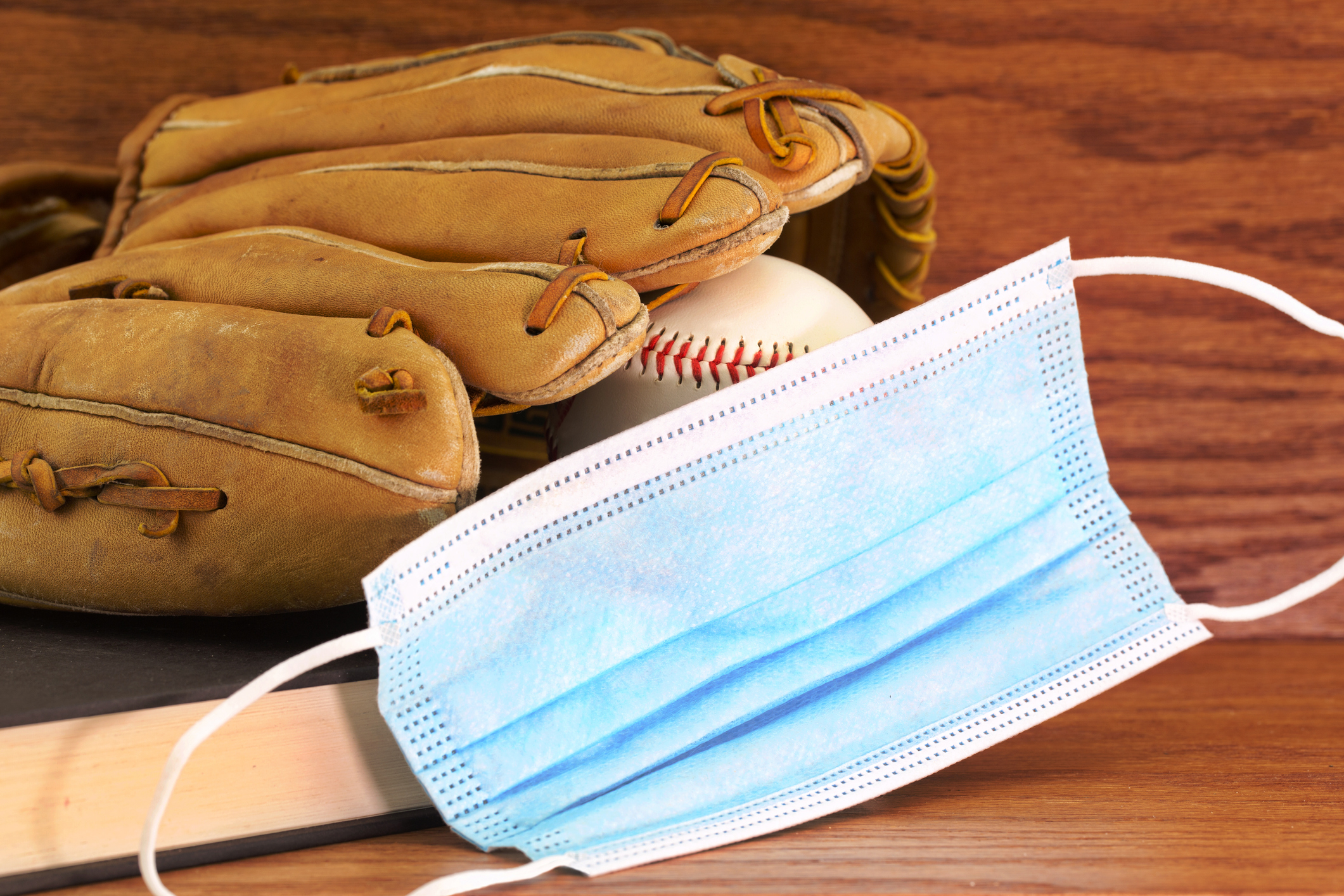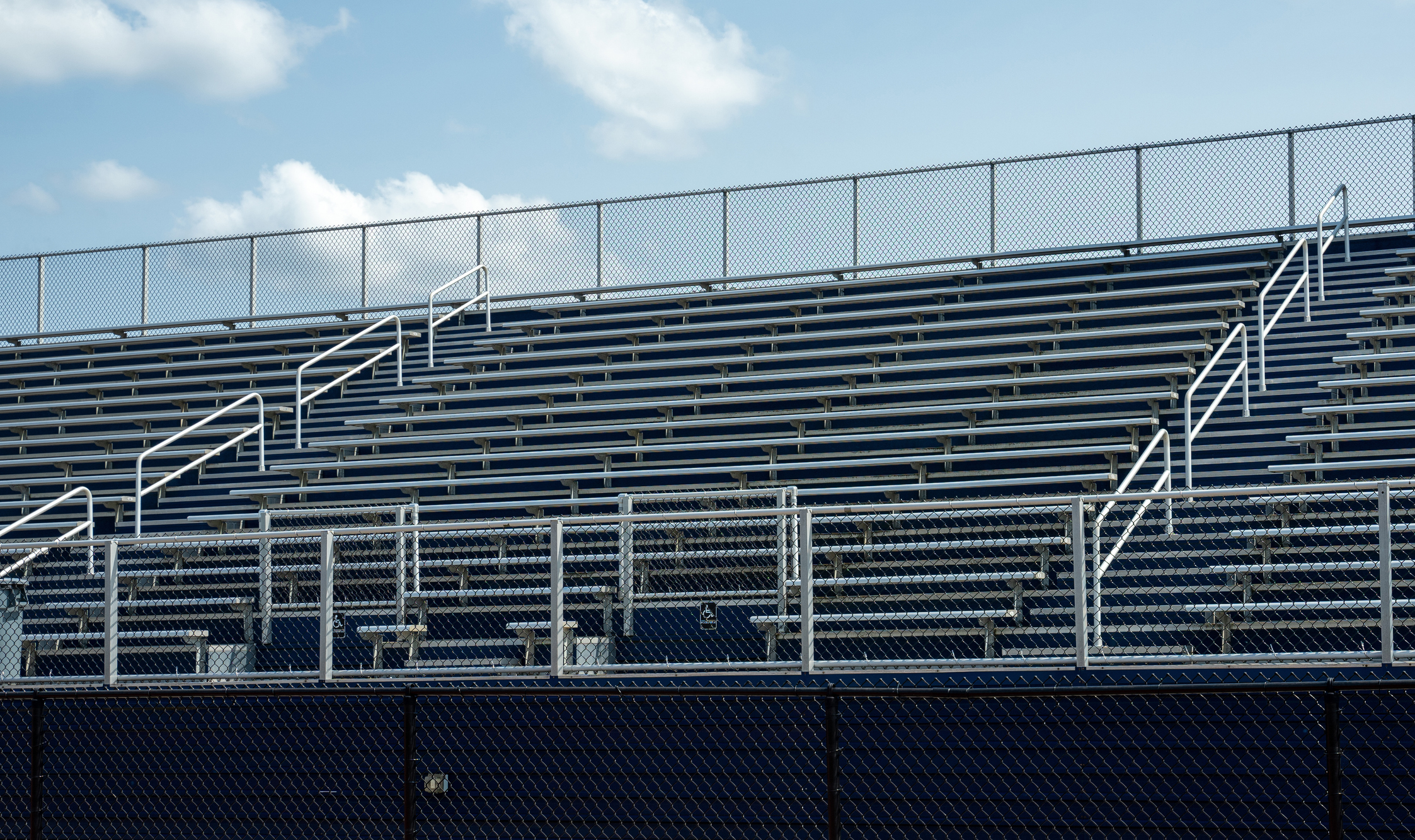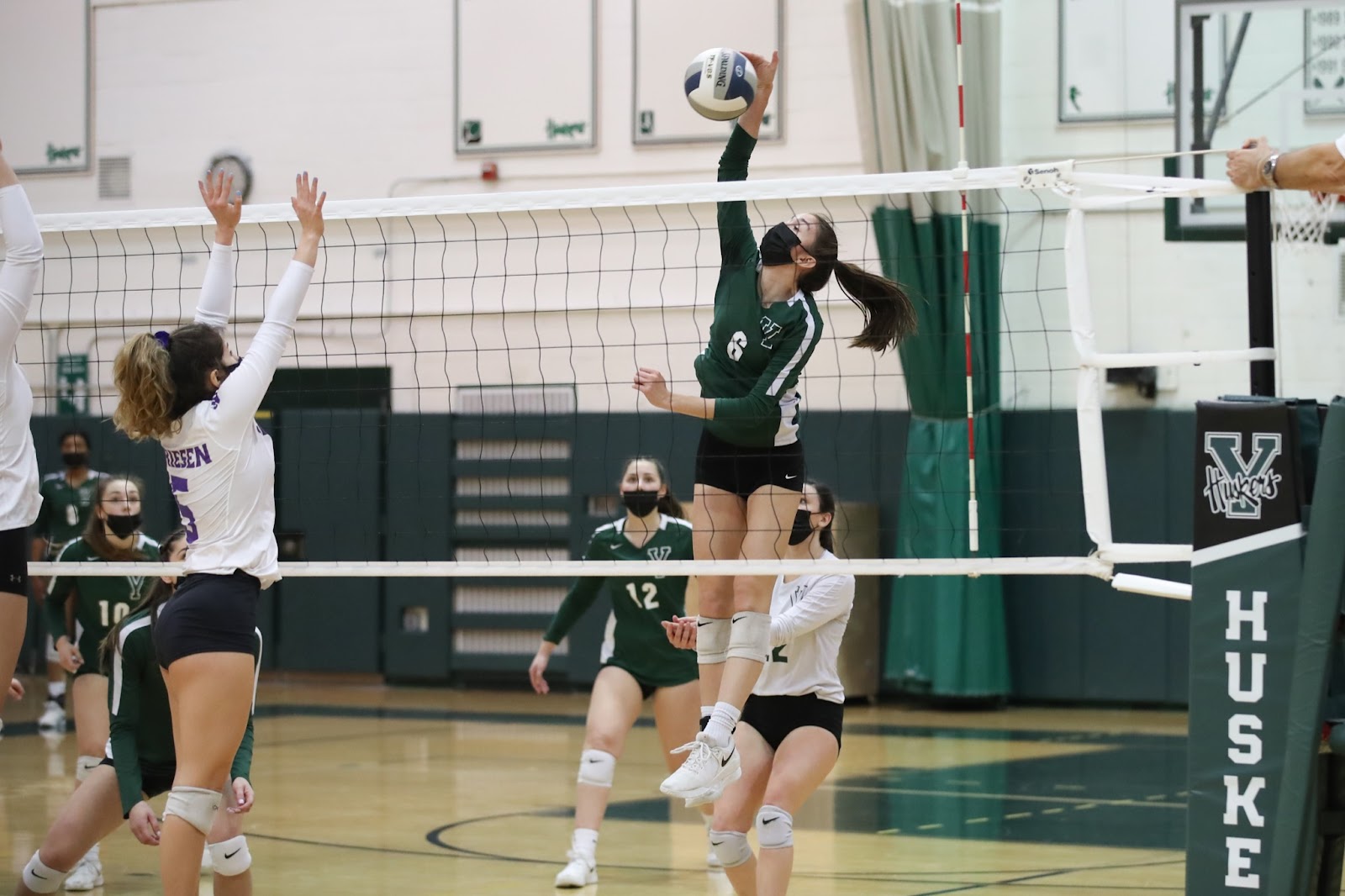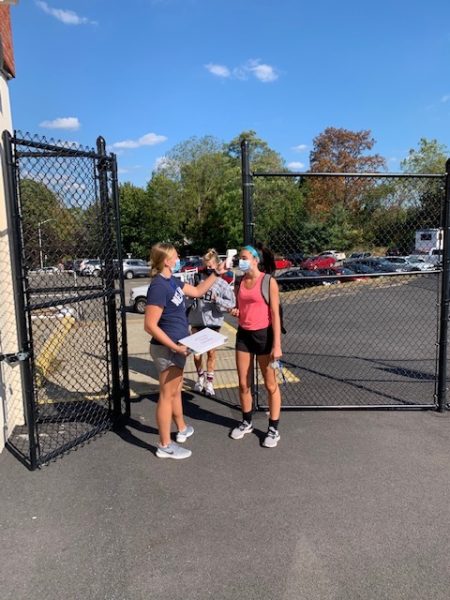Welcome to Your Weekend+
News Based on facts, either observed and verified directly by the reporter, or reported and verified from knowledgeable sources.
A Westchester business’ successful open hiring practice; the most inventive noodle dishes around the county; scenic walks by the water; Seabiscuit’s races in Yonkers; reading recommendations; and more

Good morning! Today is Monday, April 4, and you are reading today’s section of Examiner+, a digital newsmagazine serving Westchester, Putnam, and the surrounding Hudson Valley.
Need to subscribe — or upgrade your Examiner+ subscription to enjoy full access to all of our premium digital content? Details here.
By James Schapiro

Gigi Kemp remembers the day that everything went wrong.
It was Sunday, April 18th, 2021, and Kemp, the varsity volleyball coach at Yorktown High School, was out on a walk with her sister-in-law. The day was actually going really well: her team had just been awarded the #1 seed heading into sectional playoffs. They’d lost only one match on the season, to John Jay High School, and the day before, they’d avenged the loss, beating John Jay in four sets to finish off a 14-1 season.
The Yorktown team had been working toward these playoffs for two years. They had ten seniors, but the year before, they hadn’t had any. So the team had looked almost the same for two years. After losing in the section semifinal the year before to Hendrick Hudson, then seeing their season pushed back from fall to spring due to COVID, the team was finally ready to make a run deep into the playoffs as the #1 seed.
Then Kemp got a text from one of her players. The player had tested positive for COVID. Per protocols, that meant that the team would immediately enter quarantine. Their season was over.
“Oh,” Kemp remembers thinking. “I’ve got a mess here.”
She called her athletic director Rob Barrett to confirm what she already knew: the team was done for the year. Then she brought the players together on Zoom. Barrett was there too. It wasn’t news that Kemp wanted to deliver, but she knew the players had to find out one way or another.
“Immediately, I saw blank faces, I saw ceilings,” she says. “They all started crying, so they hid their faces on the zoom call. I felt like I was holding it all together myself, but there was just so much emotion that you just end up joining in. You have no choice.”
The story of Yorktown Volleyball’s sudden shutdown is a stark illustration of COVID’s impact on high school sports, but it’s only one of many. After nearly two years, high school athletics are returning to something resembling normalcy, but for a long time, they weren’t. Fans are coming back to the stands; masks are off outdoors; one positive case doesn’t automatically shut down an entire team if the positive player successfully isolates without the rest of the team getting sick. But two years of sports under COVID have impacted players and teams in ways that many are anxious to leave behind.
When COVID first took hold in March 2020, of course, high school sports shut down. They returned in the fall of 2020, but not quite fully. Players were masked, which for indoor sports quickly became a major difficulty. Spectators were limited; often, parents came to games, but teams sometimes arranged for parents to give their tickets to students so that they could put together cheering sections. Some parents, fortunately, could watch games via Local Live, the event streaming service that some area schools have recently introduced, but of course, it wasn’t the same.
The 2020/21 schedule was also modified: half of the fall seasons moved back to Spring. Schools played “Fall 1” starting in September, then played the Winter season from November to February. “Fall 2,” the fall sports pushed back from the original fall season, ran in March and April. Spring season went from late April to the beginning of June.
“I would much rather have the three seasons and be able to play sectionals, possibly go to states, and have a normal-length season,” says Shannon Ellis, now a senior at Hendrick Hudson. Ellis actually took advantage of the modified season by playing four varsity sports, a school record that by definition can never be broken, so she’s genuinely qualified to make the comparison. She played tennis during the fall season, basketball in the winter, cheer in fall 2, and lacrosse in the spring. “It was hard to get the momentum going, learn all the plays, start from basically a brand-new team, and have such short seasons.”
The lost season was especially crushing, of course, for seniors. Members of the class of 2020 lost most or all of the final season of their high school careers. The class of 2021, meanwhile, played seasons that were at the very least disrupted. Sometimes, as in the case of Yorktown volleyball, seniors unexpectedly lost the most critical moments of the final seasons of high school sports. The same was true of Hendrick Hudson’s girls’ basketball team, which in 2020 had just won the first girls basketball sectional title in school history. The team was supposed to go to the Class A state tournament — but then the tournament was canceled. The Putnam girls basketball team had a similar story in class B: the team had just won the first sectional title in school history and was headed to states when the season suddenly ended. The Horace Greeley boys’ basketball team was still alive in the tournament when things shut down, along with Rye, Hastings, and Hamilton. For all these teams, when the shutdowns came, the seniors had to learn that they’d already played their last game.
Disruptions and canceled games also caused problems for some students who hoped to play college sports. Geoff Curtis, athletic director for the Chappaqua school district, said that while some college-bound athletes were fortunate, others weren’t.
“For the kids that lost their final season, as seniors, it had to be heartbreaking,” he says. “If they had college aspirations, COVID ended anything that may have popped up last-minute from a college hearing about their senior season, and it killed any chance of showcases and clinics on college campuses, too.”
On the other hand, athletes already committed to colleges, he said, generally didn’t experience any admissions problems. But COVID still had an impact. Most college athletes were extended an extra year of eligibility to make up for the lost time caused by the virus. That meant more playing time for fifth-year seniors with experience in their college programs — and less playing time (and fewer spots) for freshmen trying to make their way into college sports.
“I still think there were ways to get ‘seen’ and to get into a place that is a good fit,” Curtis says. “But just as COVID has changed so many things, it definitely changed recruiting for college athletics.”

There are two main parts to the story of COVID’s impact on sports. Restrictions to stop the spread are one of them. Teams like Yorktown’s volleyball team lost games, in some cases crucial games that made up the rest of their season, after positive tests. Even now that restrictions have lessened, they can still play an outsized role. Ken Sherman, Varsity Girls Basketball coach at Hendrick Hudson, remembers losing two players to positive tests over Christmas and New Year’s Day and having to play games with a seven-player roster for several weeks. Even once his players had completed their isolation and were ready to return, they had to secure cardiac clearances from their doctors, which caused more problems and pushed their returns to the court farther back. There were also the masks. Sherman remembers his team gamely working to stay safe while also practicing as close to normal as possible, but wearing masks during indoor practices just isn’t fun.
“They’re frustrated with that,” he says. “They’re sick of wearing the masks. That, they tell me on a daily basis. But we still do it, because it’s still one of the protocols.”
Sherman remembers when he realized how difficult masks made it to work out.
“I practiced with them, and it’s very, very difficult to run indoors with a mask on your face,” he says. “And I only participated for about 20, 25 minutes of a two-hour practice.”
Restrictions are one part of the story. The other part, though, is COVID itself. When the Yorktown volleyball team shut down its season, for instance, some players wondered if there was some sort of loophole, some way around the restrictions. There wasn’t. But within a few days, COVID made the question moot. The day after Kemp delivered the news, three players tested positive. The next day, there were four more. By the end of the week, thirteen of the sixteen players on the roster were positive, along with two coaches, Kemp’s mother who had attended the team’s final game of the regular season, and the team’s photographer.
“It just snowballed,” Kemp says.
Those two factors — COVID restrictions and the virus itself — combined to make putting on sports seasons difficult for a variety of reasons. There were missing players, disagreements over capacity limits, uncertainty over protocols, and sometimes even the threat of referee shortages. All the uncertainty led some schools to a more aggressive approach: they scheduled as many games as possible, as early as possible, knowing that things could shut down at any moment and playing as many games as they could before that.
“We promoted the idea of going out there and taking every opportunity possible,” says Dan Iorio, athletic director at Pleasantville. “We were able to fulfill all of our scheduled requirements a lot sooner than a lot of other schools because we were not necessarily focused on strategy and rescheduling, it was more of just ‘let’s play when we can play because we don’t know where this virus is going to take us.’”
Some schools have also found silver linings in pandemic athletics in other ways. Last week, for instance, Hendrick Hudson’s girls’ bowling team won a section championship. The team looked vastly different than it has in the past.
“On that team, there were four girls who never bowled before,” says Athletic Director Tom Baker. “But they bowled because they wanted to play on a team and join something and have some fun. Maybe that’s connected to COVID, maybe it’s not. But we ended up winning a sectional championship. Seeing their faces, as jubilant as they were, it’s just a piece of how rewarding it all is. As challenging as it all is, it’s just as much if not more rewarding for what we’re able to offer the kids.”
The challenges may be abating, or at the very least, athletic programs may be learning how best to deal with them. Restrictions this season are less than they were last year; with the mostly outdoor Spring season coming up, they’ll be even less. But for athletic directors and coaches, in some ways, things are just as challenging as they were last season, if not more so. In 2020/21, protocols were simple, albeit strict: if a team had a positive case, everything stopped. Now, though, protocols are more relaxed but also more complicated. Things don’t automatically shut down if a team has a positive case; the team just has to find a way to muddle through.
It’s worth it, of course, to keep sports up and running. But still, Baker’s description of an athletic director’s day-to-day job is impressive and almost frightening. In 2020/21, he said, a case meant a shutdown, plain and simple. Easy enough. But in 2021/2022, things changed.
“You keep plowing through and find ways to make it work,” he notes. “All your contact tracing still had to get done. Your schedule still had to get done. Rosters were changed on the fly for many teams throughout the season. On top of that, you dealt with the COVID issues across the area. Lack of transportation in school districts, having to manage that. A lack of officials for various sports, having to manage that. Last year you paused and had time to figure it out. This year at two o’clock in the afternoon, we could have been informed of a COVID case and had to do all that. Contact trace, figure out the transportation, figure out the different roster, let our opponent know, let the team that you played yesterday know so that they can contact trace, change the officials if need be because maybe they were involved with contact tracing, but keep that game at 4:15 that you still have to play.”
For the moment, COVID’s trajectory seems to be moving encouragingly downwards. Hopefully, Spring sports will go on as scheduled, with teams staying healthy while playing as ordinarily as possible. But the thing about COVID is that no one really has any idea. Athletic directors and coaches will continue working their hardest to keep teams on the field, the court, and the ice. Players will still want to play. As far as what is allowed and what is possible, though, only time will tell.
Allison Torres is a senior on the Yorktown volleyball team. Last season, her junior year, she lost her best chance at a section title. She and the entire team were crushed. They tried to make light of it and move on; they put together a collage of all the crying faces when Kemp informed them that the season was over. The consensus was that it was funny but still sad.
In the fall, Torres came back for her senior season. The ten seniors from the previous year, who she’d played with her entire high school career, were gone. The team was new, young, and rebuilding.
“I couldn’t really move on,” Torres says. “I was really fixated that I’d had that team since freshman year, I’d had that team for the past three years. I had to start fresh, and I didn’t really know how.”
That, in a nutshell, is sports during COVID. Everyone wants to move on. Everyone wants things the way they were, the way they always have been. But how to get back to that point isn’t quite clear.
“COVID was unpredictable,” Torres says. “We couldn’t change it, so it was just what happened. We had to move on with it and accept it, even though it did suck.”

Allison Torres goes for a spike during the Yorktown volleyball team’s match against John Jay, its last game of the regular season. Yorktown won, avenging a loss to John Jay weeks prior. (Credit: Bob Castner)

As per protocols, Hendrick Hudson Girls Varsity Soccer assistant coach Nicole DiNardo takes the temperatures of her players during the Fall 2020 season (Credit: Tom Baker)
James Schapiro is a freelance writer and an editorial producer at MLB.com. He writes the Shea Bridge Report newsletter (sheabridge.substack.com) and has written for a variety of publications, from Baseball Prospectus to Irish Central to his weekly Harry Potter newsletter. Follow him on Twitter @jschapiro_SBR.
We hope you’ve enjoyed today’s section of Examiner+. What did you think? We love honest feedback. Tell us: examinerplus@theexaminernews.com
For hyperlocal news coverage of Westchester and Putnam from our four community newspapers, visit our sister site, www.theexaminernews.com

Examiner Media – Keeping you informed with professionally-reported local news, features, and sports coverage.
